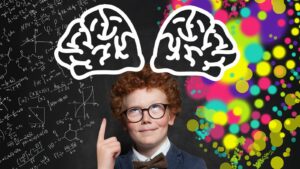In the realm of childhood studies, one term stands out – “child development impact factor”. This intriguing concept serves as a compass, guiding researchers and educators alike in understanding the complex dynamics of child development. It’s the key to unlocking the mysteries of how various factors influence a child’s growth and development.
From environmental influences to genetic predispositions, the child development impact factor plays a crucial role in shaping a child’s future. But what exactly is it? How does it work? These questions are just the tip of the iceberg. Dive into the article to explore the fascinating world of child development impact factor and its profound implications on a child’s life trajectory.
Child Development Impact Factor
Delving deeper into the intricacies of child development assists in comprehending the ‘child development impact factor.’ It involves exploration of its importance, and investigation of the different stages that influence a child’s growth trajectory.
Early childhood development bears significant weight in the life of an individual, shaping their cognitive, emotional, and social growth. It’s during these formative years where critical experiences occur, laying the groundwork for future development. One needs only to consider how early experiences mold one’s personality, skills, and behavior to appreciate how pivotal this stage is. For instance, a nurturing environment cultivates a sense of security, helping children develop positive relationships in the future.
The Different Stages of Child Development
Child development branches out into several stages, each with its unique characteristics and milestones. First, there’s the infant stage (0-2 years), where children learn vital skills like walking and talking. Second is the early childhood stage (2-5 years), considered the golden period for skill development. Next comes the middle childhood stage (6-8 years), characterized by the refinement of skills. The adolescent stage (9-12 years) follows, a transitional phase to adulthood. Every stage contributes to the child development impact factor, setting the path for the individual’s life trajectory. For instance, communication abilities honed in the infant stage lay the foundation for social interactions in subsequent stages.
Key Influences on Child Development
This section dissects the role of key elements, namely parents and environment, on childhood development.
Parents play a paramount role in molding development trajectories. Their actions, attitudes, and care determine a child’s social and emotional growth. For example, engagement fosters learning and cognitive development. Teaching shapes a child’s behavior. Secure parent-child bonds foster trust, promoting psychological wellbeing.
Influence of Environment on Child Development
The environment significantly determines a child’s growth and development. Physical environment—such as the cleanliness and safety of a child’s surroundings—affect health and development. Congenial family environment nourishes emotional and social development. Moreover, exposure to violent or stressful environments can instigate behavioral and emotional disorders. For example, children from peaceful and nurturing environments tend to have better social, psychological, and health outcomes than those from hostile environments.
Unveiling the Child Development Impact Factor
As a pivotal framework in childhood studies, the “Child Development Impact Factor” shines a light on the delicate interplay of numerous factors shaping child development. This article dives deeper into defining this term and exploring its importance.
The “Child Development Impact Factor” doesn’t reference a single parameter. It refers, instead, to an intricate matrix of influences that leave their mark on a child’s overall development. It encapsulates varied elements, including genetics, environmental influences, parental involvement, and early experiences.
A child’s genetic makeup offers the initial blueprint for growth. It predetermines certain characteristics like physical attributes, intelligence, and temperament. However, it’s only part of the picture. The environment a child grows in, both physically and emotionally, provides another layer of influence. It informs how children perceive the world around them and interact with others.




